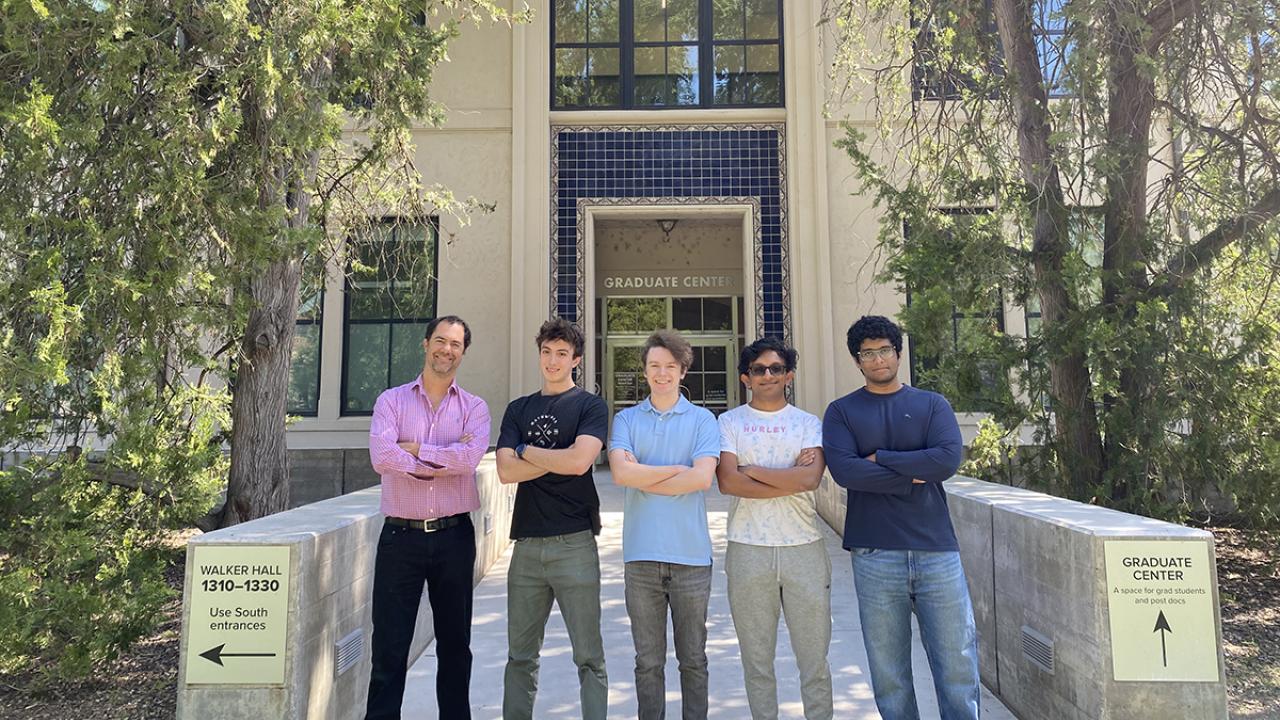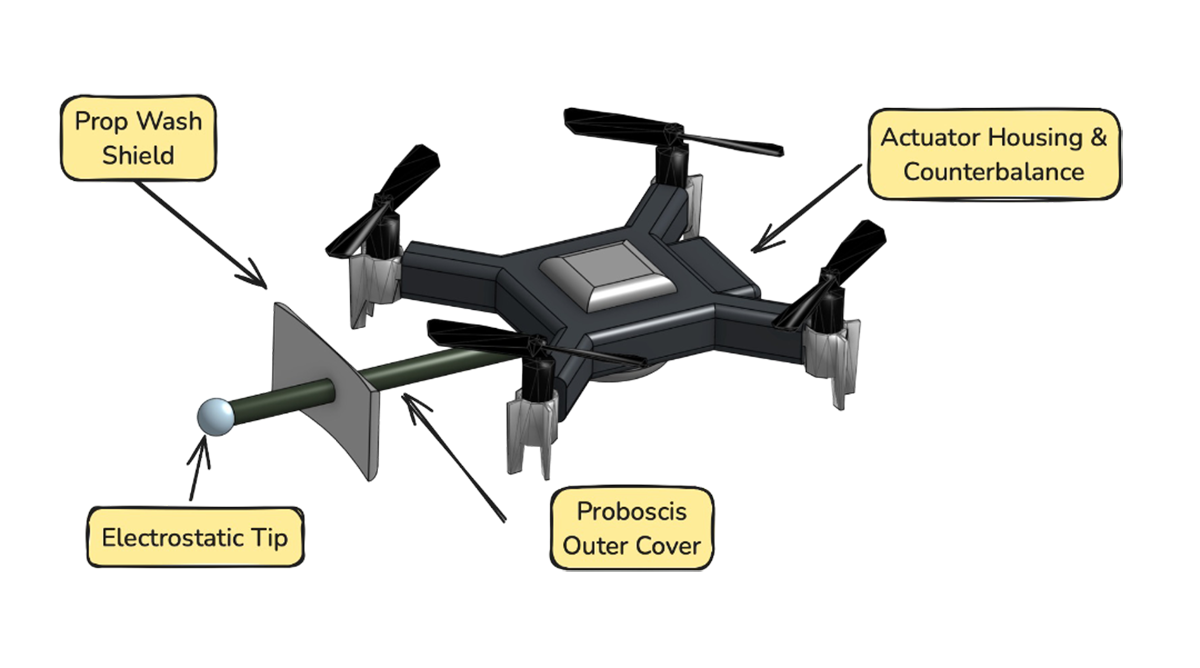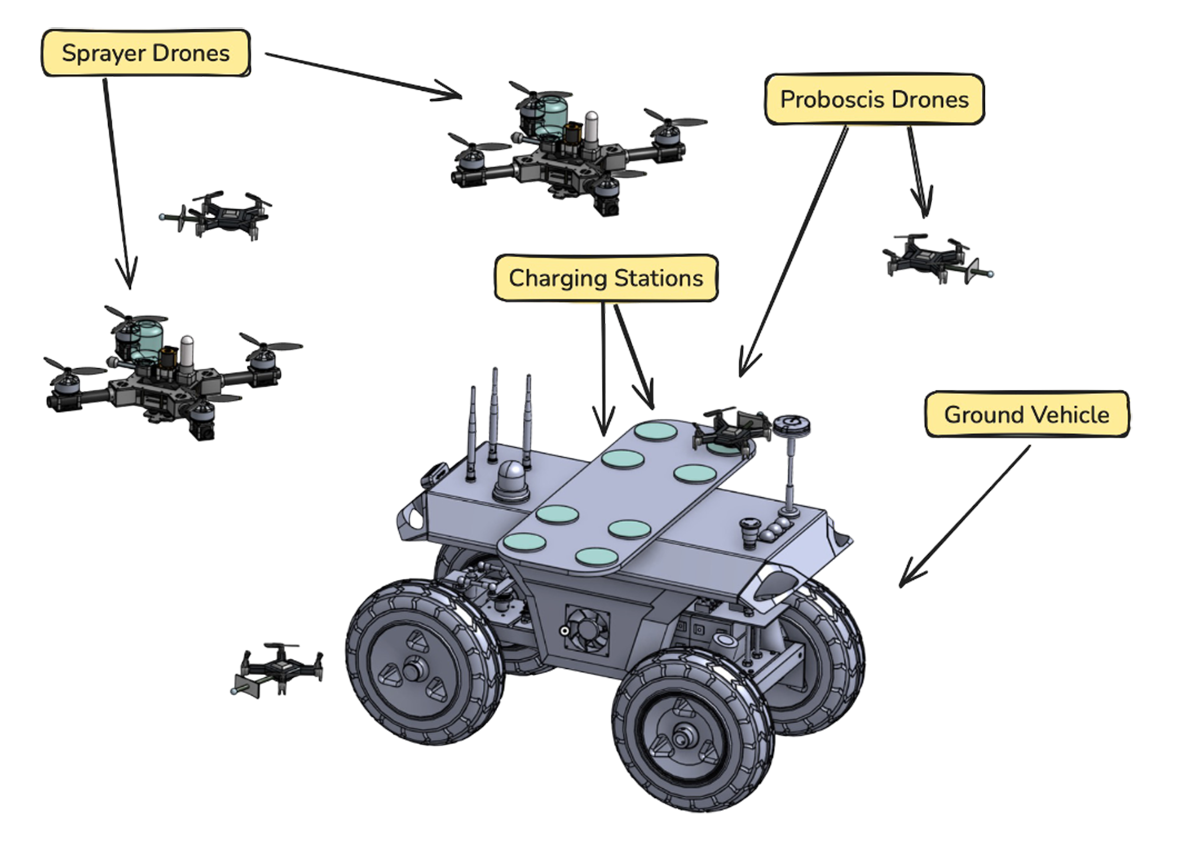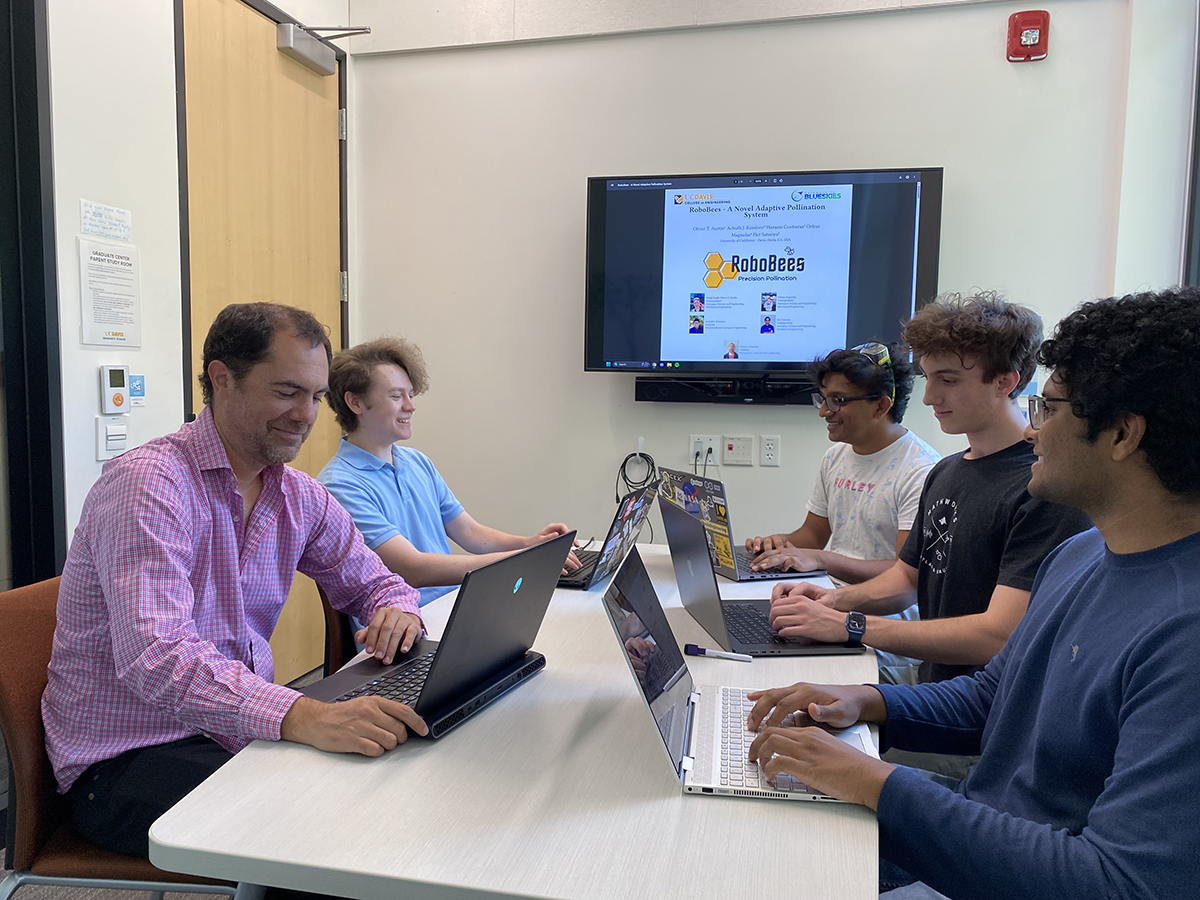
Buzzing Toward the Future: UC Davis Team Rethinks Pollination with RoboBees
Bumblebees inspire flight of next-level miniature drone
Imagine it's springtime and you're looking at strawberry fields spanning thousands of acres. All the strawberry plants are filled with small white blossoms. Suddenly, a swarm of what seems to be bees is hovering over the field, mimicking bee flight patterns and stopping at each flower to pollinate.
These aren't bees, however. They are miniature drones, aka RoboBees, devised by five students from the University of California, Davis. Hoping to transform agricultural pollination strategies with aviation, the students entered RoboBees into NASA's 2025 Gateways to Blue Skies Competition.
The team, led by Oliver Austin, a third-year undergraduate student double majoring in aerospace science and engineering and mechanical engineering, was selected as one of eight national finalists that will present their finalized submissions in Palmdale, California, near NASA's Armstrong Flight Research Center on May 20.
"The whole team is happy that we've become finalists and that we're able to present our ideas. We hope that we can develop [RoboBees] as it will make a huge impact in assisting farmers with declining bee populations," said Austin.
Bee-ing Productive
The competition asked student teams to create aviation systems that can be applied to agriculture by 2035 or sooner, with the goal of improving production, efficiency, environmental impact and climate resilience.
The RoboBees team, which also includes second-year mechanical and aerospace engineering undergraduate students Orfeas Magoulas and Het Satsiya, mechanical engineering Master of Science student Achuth J. Kondoor and biological and agricultural engineering Master of Science student Horacio Contreras, may have the edge in the competition.
While proposals from challengers like Boston University and the University of Tulsa focus on surveillance and monitoring, RoboBees is designed to support natural pollinators and improve crop yields.
RoboBees is a novel adaptive pollination system of a swarm of lightweight autonomous drones that can mimic natural pollination. The multirotor microdrones each weigh under 250 grams and will either have a sprayer to distribute pollen or an electrostatic tip as a proboscis-like arm to take pollen from one flower and deposit it on another.


The proboscis-like arm is a particularly unique RoboBees feature. By referencing the long, tube-like tongues of butterflies, the RoboBee's electrostatic tip can deposit pollen directly into the flower to prevent pollen from landing on leaves or being blown away by the wind.
Each microdrone will be equipped with a camera to help detect the appropriate flowers and AprilTag, a QR code-like system used for computer vision, to monitor its location. The fleet would all be connected to a central computer system, or a BeeHive, to coordinate the drones' locations relative to crops and handle drone recharging and pollen refueling.
Austin and his team seek to modernize inefficient pollen dispersal systems and reduce costs for farmers. With their RoboBees drones, they can provide a cheap and rechargeable alternative to pollen distribution — and on a larger and more accurate scale than with bees.
The biggest problem RoboBees is trying to solve, however, is the decline in bee populations. According to the U.S. Department of Agriculture, bee populations have fallen by 80% since 2007. Austin and his team aim to support pollinators with this technology and extend their product to work with bee conservationists to create a symbiotic relationship between drones and bees.
"Without bees, there's going to be significant agricultural impacts. We were like, 'How can we assist bees, rather than replace them?'" said Austin. "By assisting bees, we can [also] support farmers."
A Swarm of Ideas

Associate Professor of Mechanical and Aerospace Engineering Zhaodan Kong introduced Austin and Magoulas, students from his Cyber-Human-Physical Systems Lab, to the Gateways to Blue Skies Competition. Austin and Magoulas then recruited Kondoor, Satasiva, and Contreras. They were all interested in the opportunity to combine their backgrounds in uncrewed aerial vehicles, or UAV, and agricultural engineering research to highlight UC Davis's agricultural legacy.
The biggest challenge the team faced was trying to balance RoboBees' futuristic capabilities with current drone mapping, surveillance, computer recognition and battery technology to determine whether their proposal was something feasible in the next 10 years. To solve this issue, the team referenced other attempts to use UAVs in agriculture, like drones for crop picking and pesticide spraying. They looked at these drone ideas to determine that multiple drones were key to using UAVs in this niche of agriculture.
Many on the team have a background in both aerospace science and mechanical engineering; however, Contreras brings his knowledge of agricultural science. Having this cross section of knowledge, Austin says, contributes to their overall learning experience by helping develop passion across disciplines.
"What makes this project important to me is being able to make an innovation that spans multiple industries," said Austin. "I have loved drones for a very long time, and so being able to extend the reach of UAVs and make a proposed impact on the agricultural world is really meaningful to me."
In It to Win It
Winning the competition would be a huge boon for the team, who would use the prize money to develop a microdrone to test the technology and eventually solve issues like complex navigation, pollen reloading and wireless charging. Ideally, RoboBees will become a multi-year project in Kong's lab, where Ph.D. students can help make it a reality.
"We've had discussions of continuing this project further than the competition," said Austin. "Everybody has a connection to the project, so regardless of whether we win or not, I think everybody's really happy with how this project has turned out and how much of a learning experience it has been for all of us."
